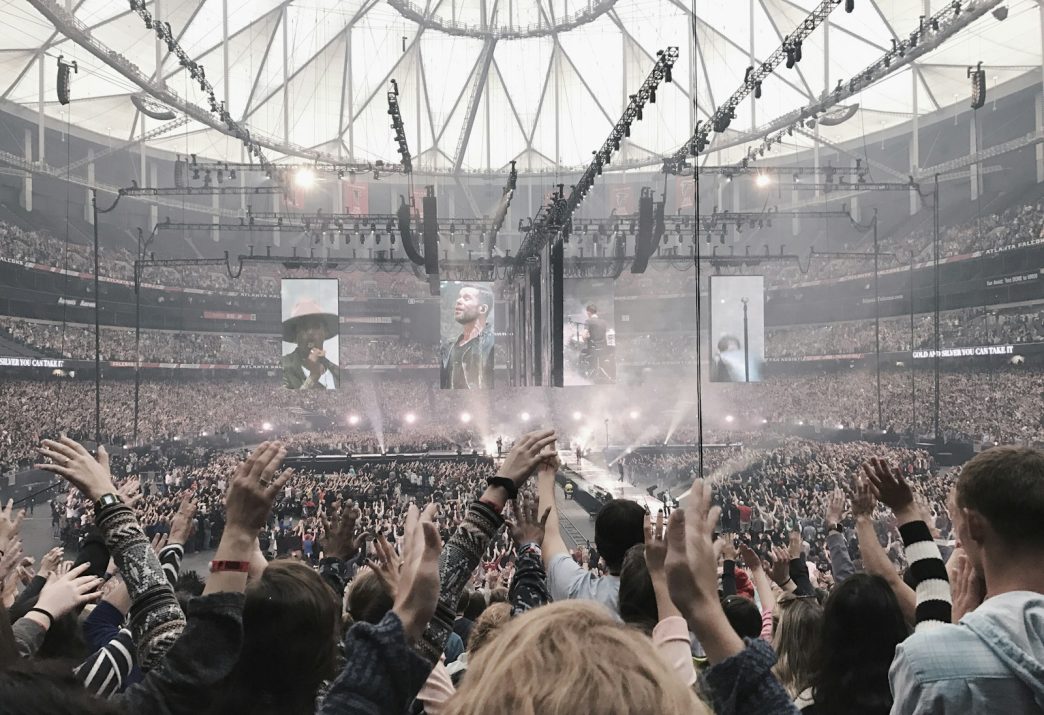Understanding the distinction between a stadium and an arena is essential for event planners and attendees. While stadiums, with their expansive design and massive capacities, cater to large-scale events, arenas, with their enclosed spaces and versatile setups, offer a more intimate experience.
Knowing these differences helps organizers choose the right venue for events and manage expectations around ticketing. For those looking to sell concert tickets or attend an event, the venue type can greatly influence the overall experience. Whether it’s a stadium’s grandeur or an arena’s intimate connection, each offers special advantages that cater to different needs and preferences.
Definition and Purpose
Stadiums and arenas serve as major venues for various events, but they differ significantly in their design and purpose.
A stadium is an open-air facility primarily designed for large-scale outdoor events such as sports games, concerts, and festivals. Its purpose is to accommodate a substantial number of spectators, often exceeding 20,000. Stadiums typically feature a large, open field or pitch surrounded by seating areas, with a design that provides a clear view of the central event area from a distance.
On the other hand, an arena is an enclosed space meant for indoor events. It can host sports events, concerts, and entertainment shows in a more controlled environment. Arenas are designed to offer close proximity between the audience and the performance or event, enhancing the viewer’s experience by making the event feel more intimate and accessible.
Capacity and Size
Capacity and size are key factors that distinguish stadiums from arenas. Stadiums are designed to accommodate large crowds, often seating tens of thousands of people. This is achieved through their expansive design, which includes a large open field or central area surrounded by tiered seating.
For example, major sports stadiums can hold anywhere from 30,000 to over 100,000 spectators, making them ideal for high-profile sporting events and concerts that draw massive crowds.
In contrast, arenas are smaller and more enclosed, typically seating 5,000 and 20,000 people. This design allows for a more concentrated audience experience and is well-suited for indoor sports, concerts, and other events that benefit from a more intimate setting. The size and capacity of each venue type play a crucial role in determining the type of events they are best suited to host.
Architectural Differences
The architectural design of stadiums and arenas reflects their distinct purposes and the types of events they host. Stadiums are characterized by their expansive, open-air design, with a large central field or pitch surrounded by seating. The seating is typically arranged in tiers to ensure spectators have a clear view of the field from various angles and distances.
This design includes features such as large scoreboards, extensive seating, and often a roof or partial coverage to protect against the elements. Stadiums are usually equipped to handle large crowds and include amenities like multiple concession stands and restrooms distributed throughout the venue.
In contrast, arenas have a more compact and enclosed design. The seating is generally arranged around a central performance area or court, often in a circular or oval pattern, which ensures that all seats are close to the action. Arenas also typically feature retractable seating, adjustable floor configurations, and enhanced acoustics to cater to a variety of indoor events.
Types of Events
Based on their design and capacity, stadiums and arenas cater to different types of events. Stadiums are primarily used for outdoor sports such as football, soccer, and baseball, as well as large-scale concerts and festivals. Their vast, open spaces are well-suited for events that require extensive field or pitch areas and large audiences.
Major sporting events, such as championship games and international tournaments, often occur in stadiums due to their high seating capacity and ability to accommodate thousands of spectators.
On the other hand, arenas are designed for indoor events, including basketball, hockey, and smaller concerts. They offer a more intimate setting ideal for indoor sports leagues, wrestling matches, and theatrical performances. Arenas are also used for conventions and trade shows.
Ticketing and Seating
Ticketing and seating arrangements differ significantly between stadiums and arenas, reflecting their different capacities and event types. Stadiums typically offer a wide range of seating options, including general admission, reserved seats, and premium sections, with tickets often priced based on proximity to the field.
With their more intimate setup, arenas generally feature fewer seating tiers and often employ a more straightforward ticketing system. Seating in arenas is designed to provide proximity to the central performance area.
Stadium vs. Arena: What’s the Big Difference?
Understanding the distinction between stadiums and arenas can enhance your event experience, whether you’re watching a major sports event or an intimate concert. While stadiums cater to large crowds with expansive designs and diverse event options, arenas offer a closer, more personal setting.
The next time you’re buying tickets or throwing an event, remember the difference between these two distinct venues, and prepare for the time of your life!













